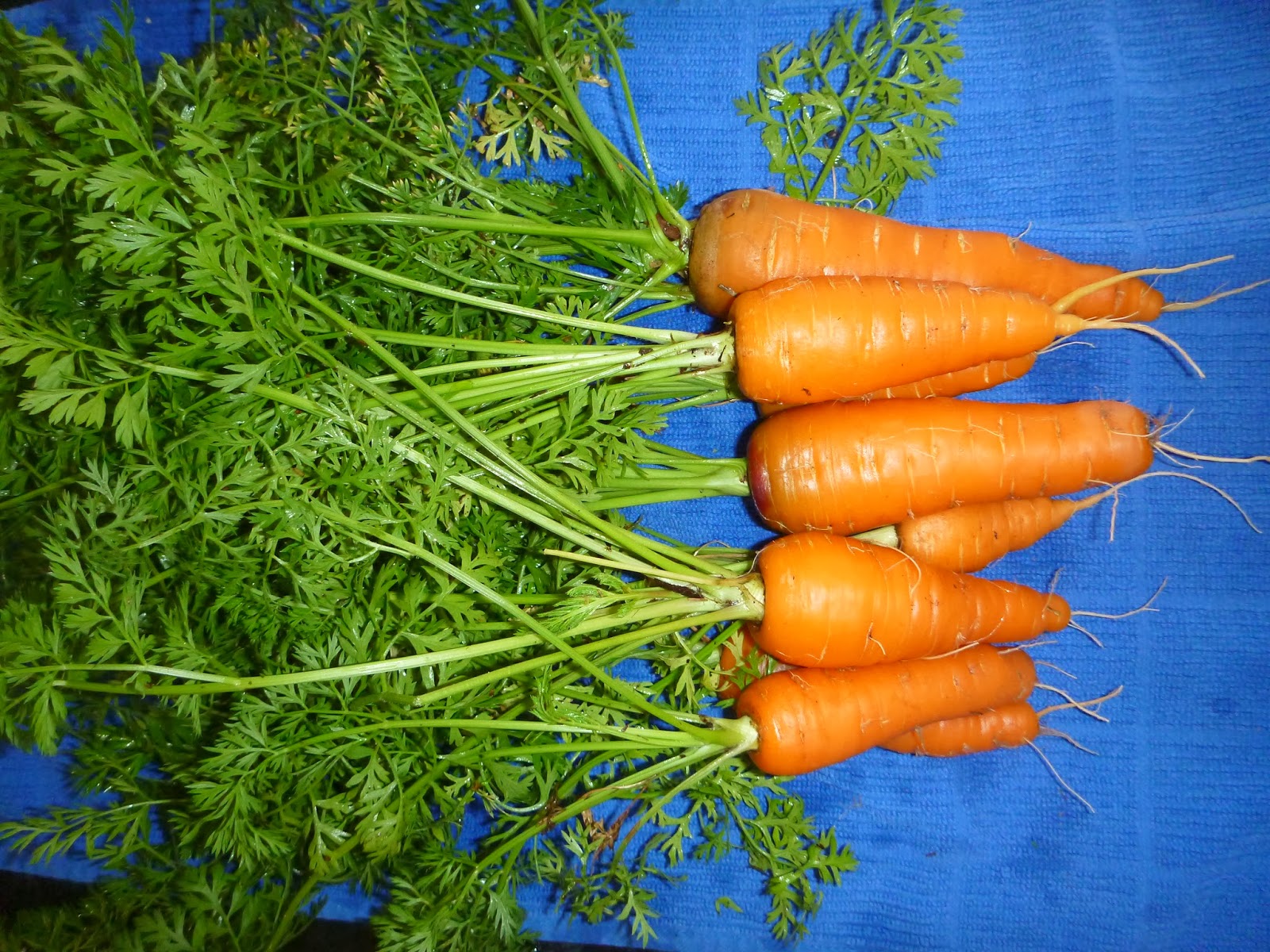Growing carrots is easy and fun, given the correct soil and seed spacing. Soil must be loose with no obstructions such as hard clay, limestone, or rocks. One of the easiest methods we have used is planting carrot seeds in a bucket.
The bucket will need to have a drain hole in the bottom. Fill the planting bucket with potting soil or compost. Push the soil to the sides of the bucket to make a space in the center column. This is filled with organic fertilizer or worm castings. Add composted soil on top of the fertilizer/worm castings and water well.
Seeds should be placed in top of the soil 3" apart (only a single seed per spot), about 2" from the sides of the bucket. Sprinkle a very small amount of loose soil over the seeds and water with a fine mist. Do not allow soil to dry out.
Carrots are ready in about 2 months. You can see the tops of the carrots peaking up through the soil when they are ready to pull.
We find Valery variety of carrots to be excellent growers and full flavored. Excellent for roasting! Short 'n Sweet variety is great for eating raw and is less tapered.



































